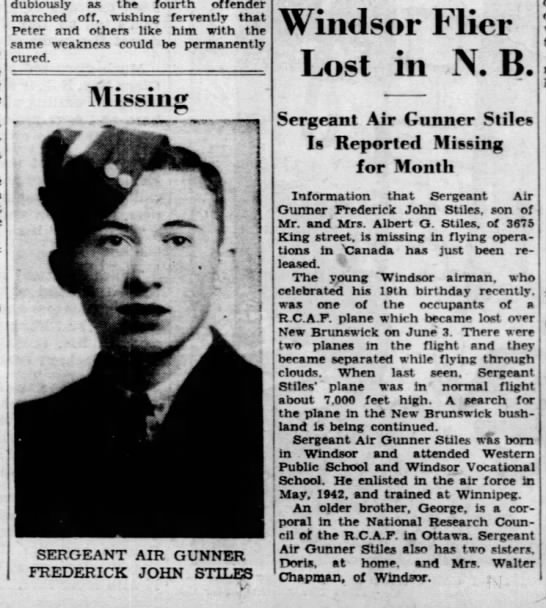
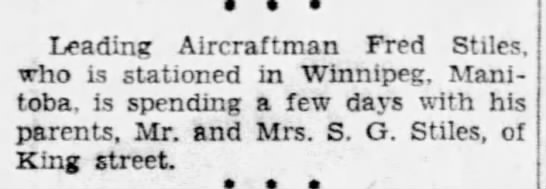
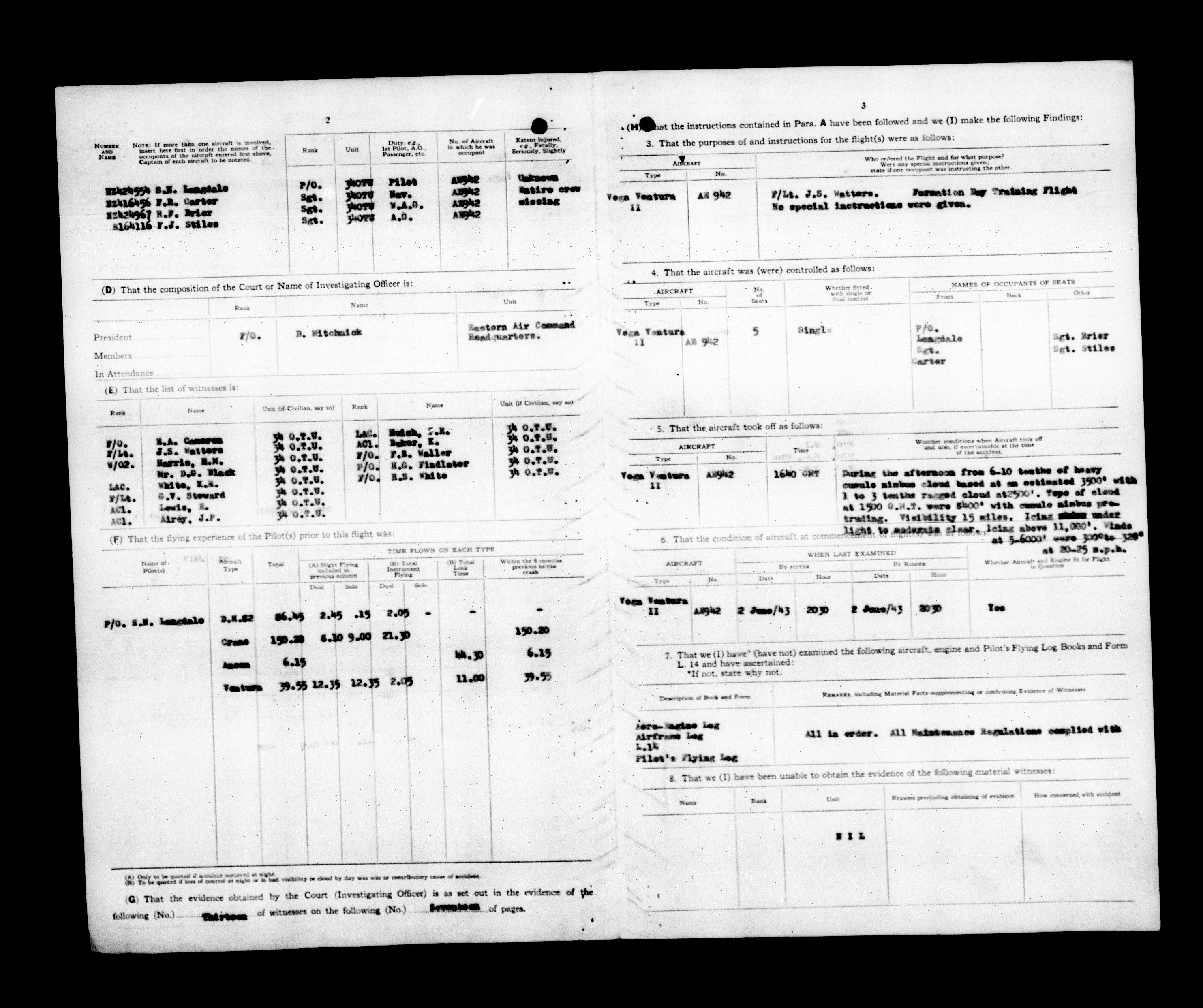
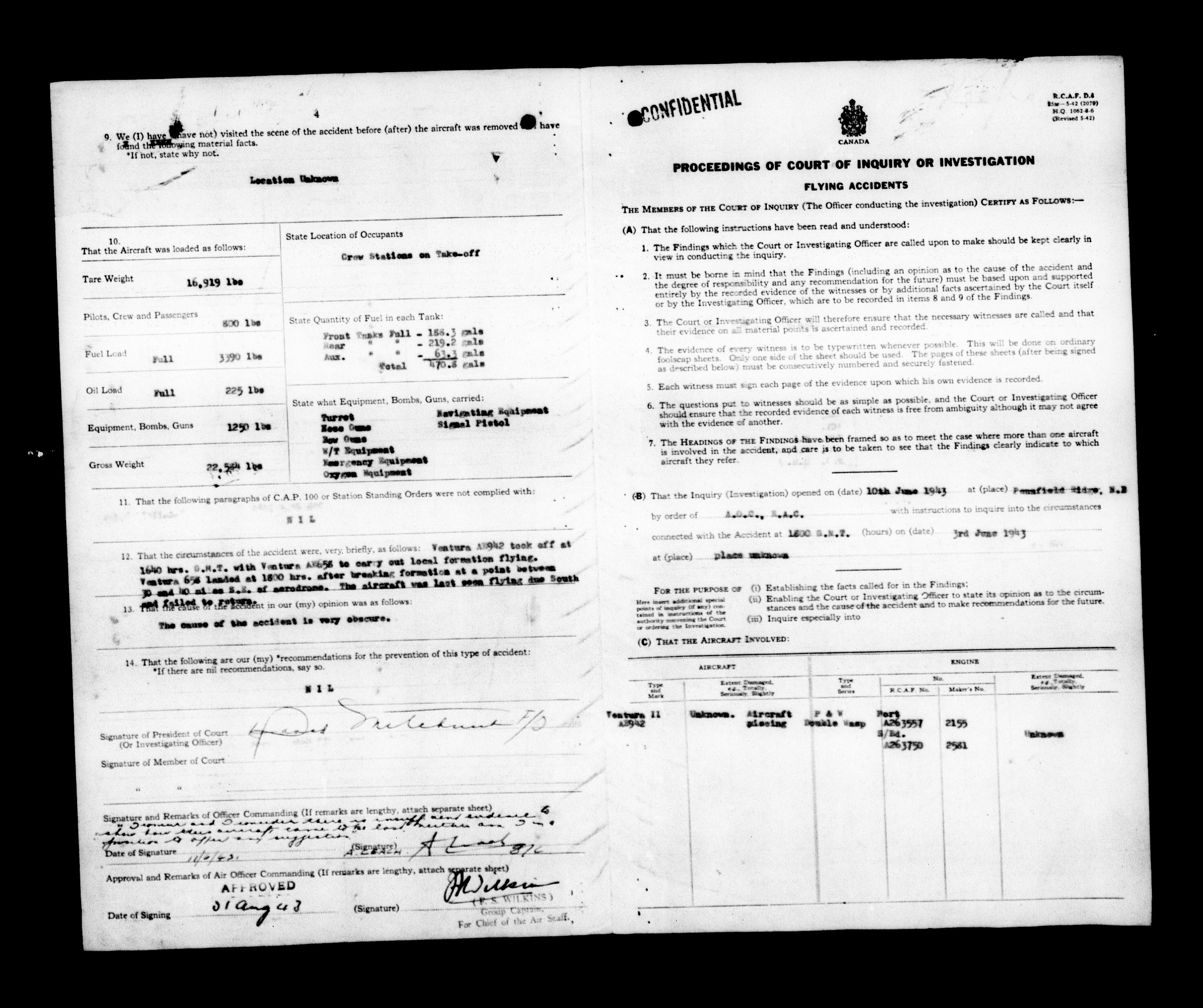
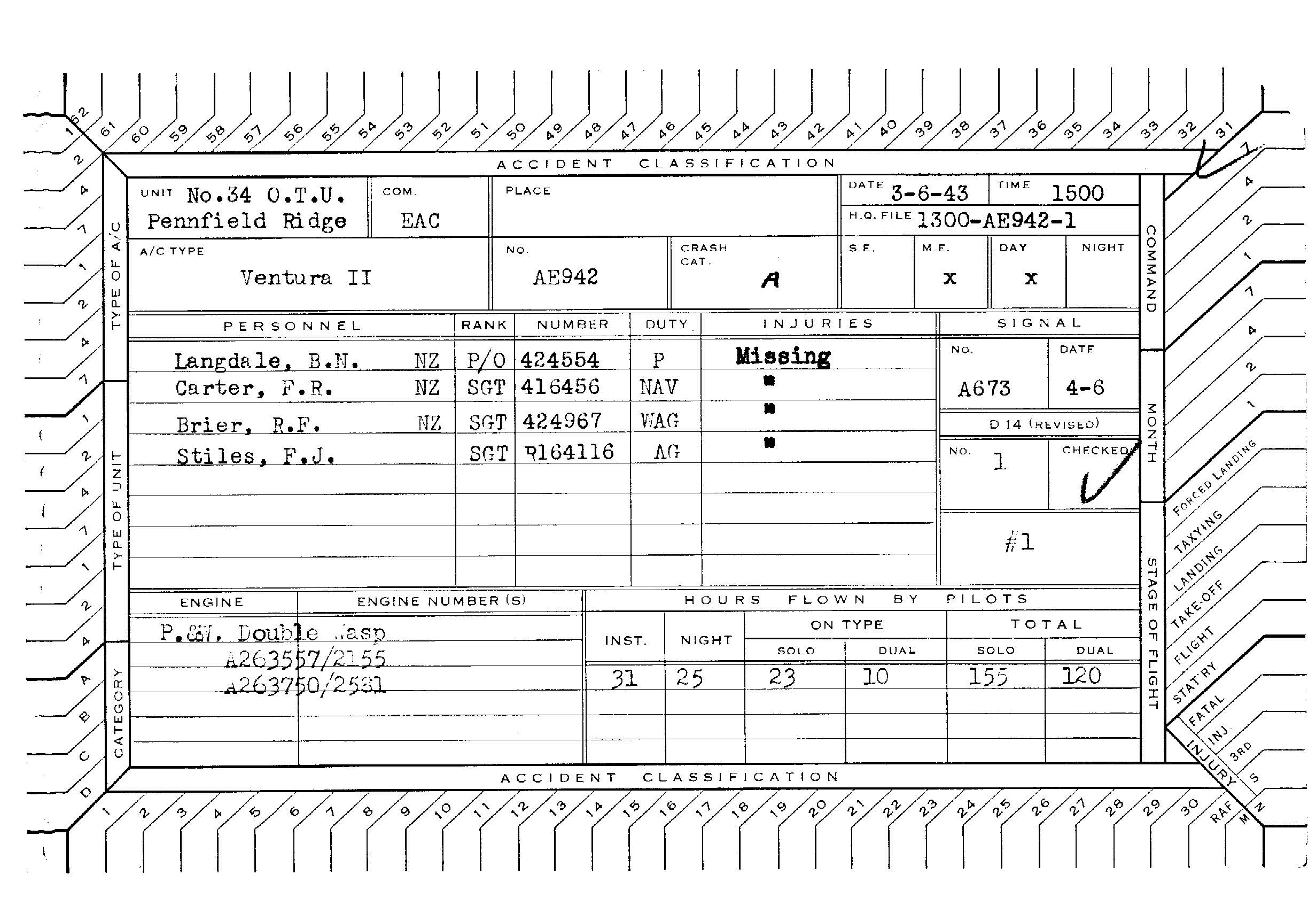
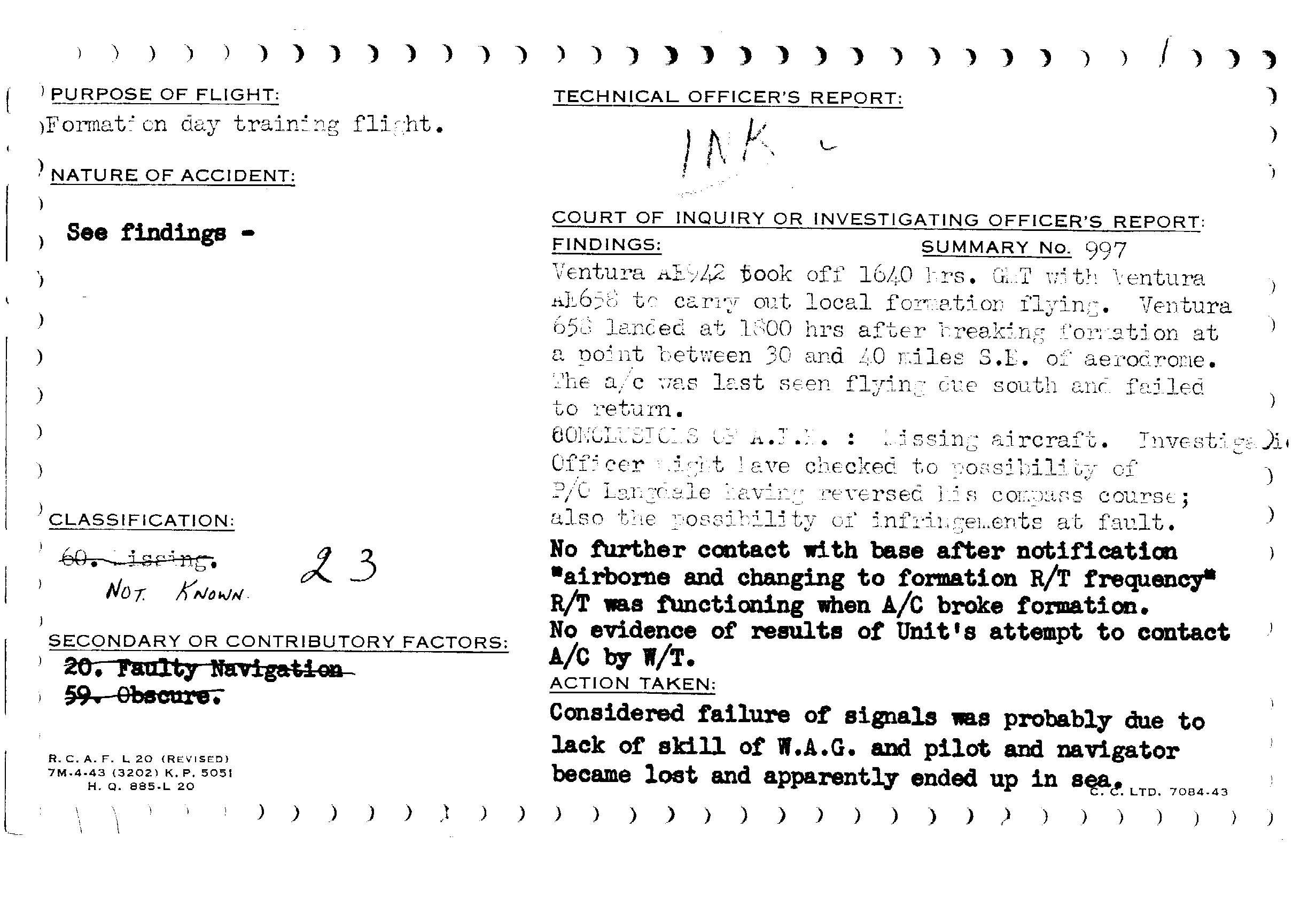
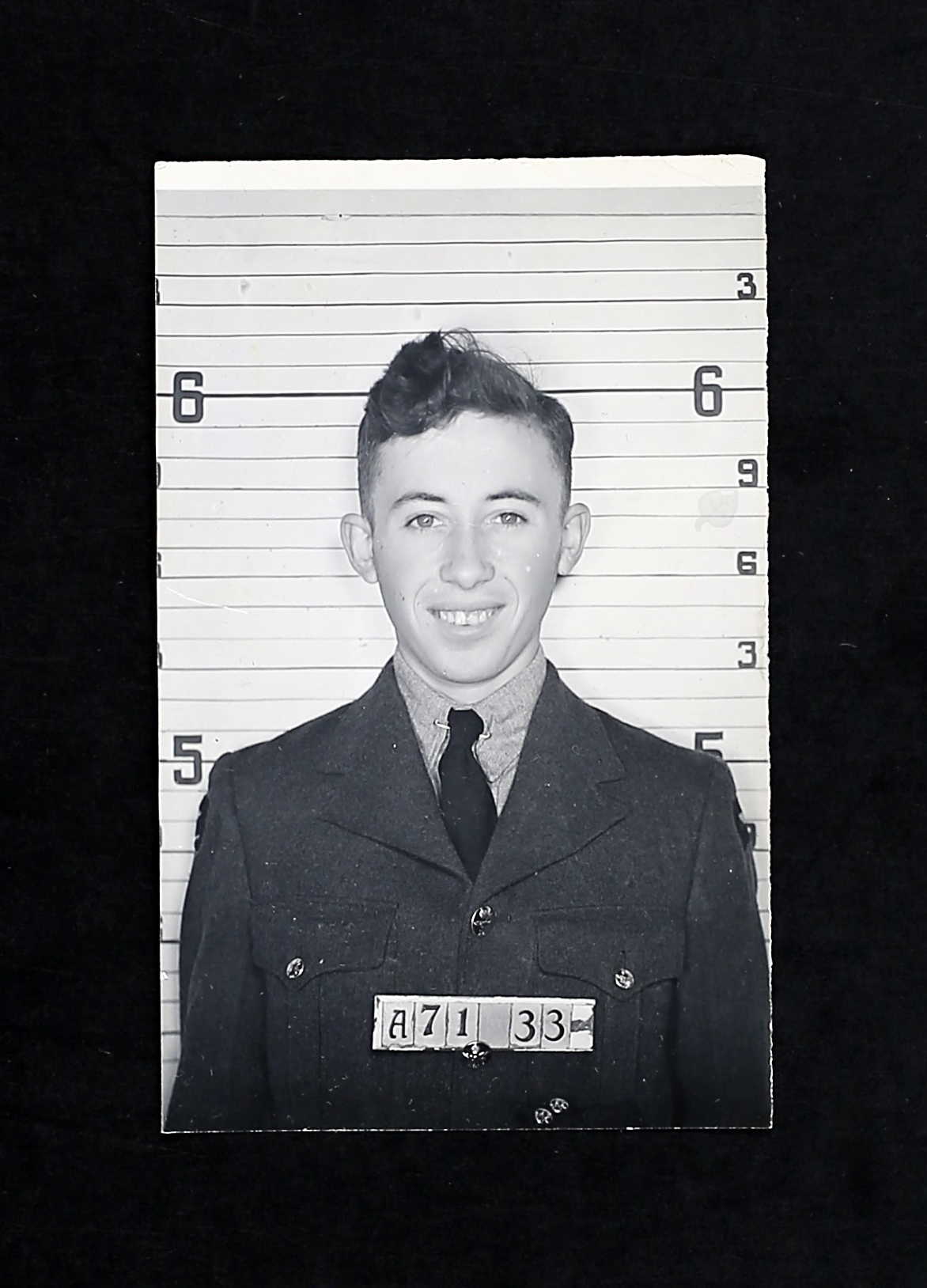
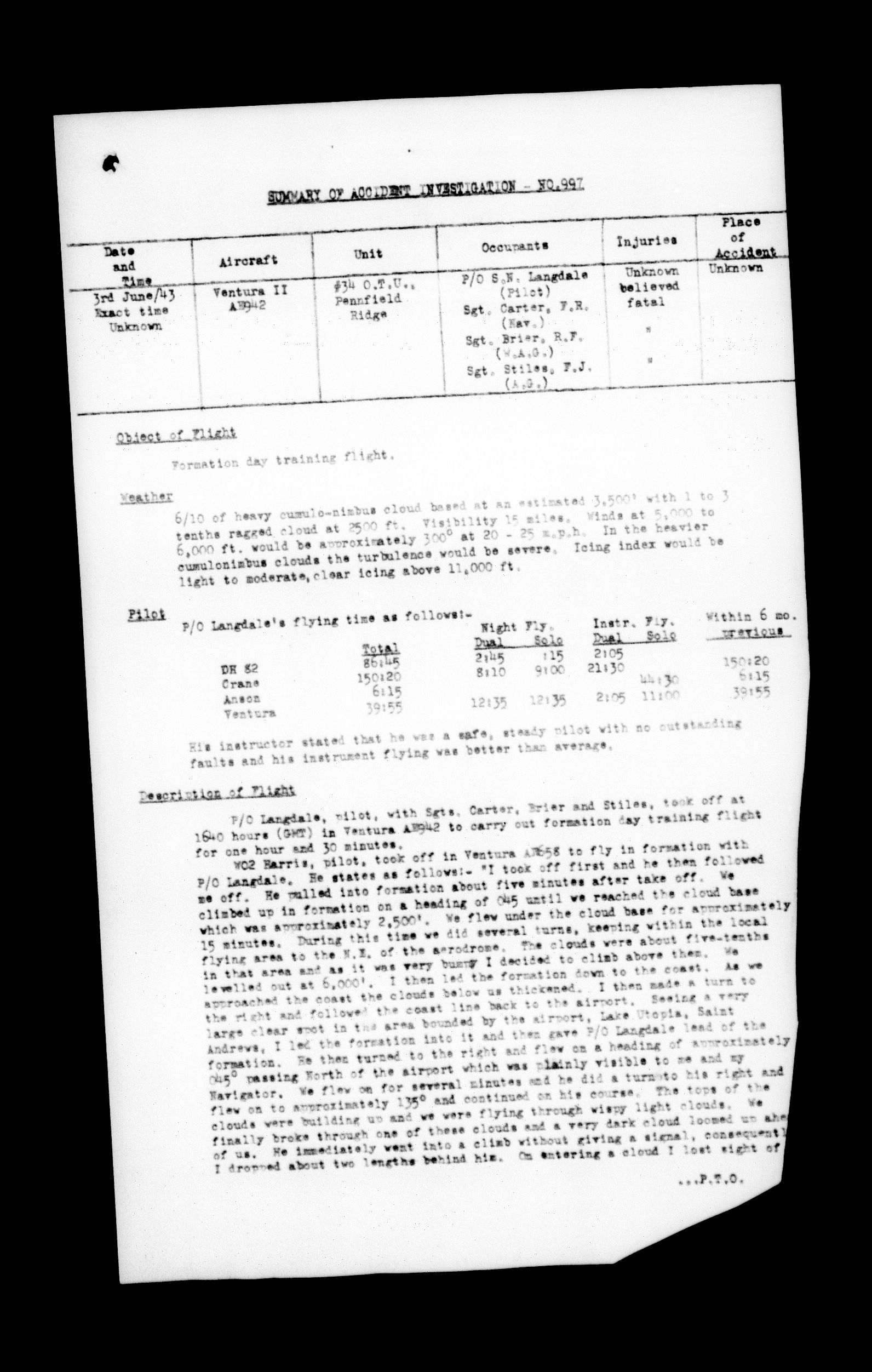
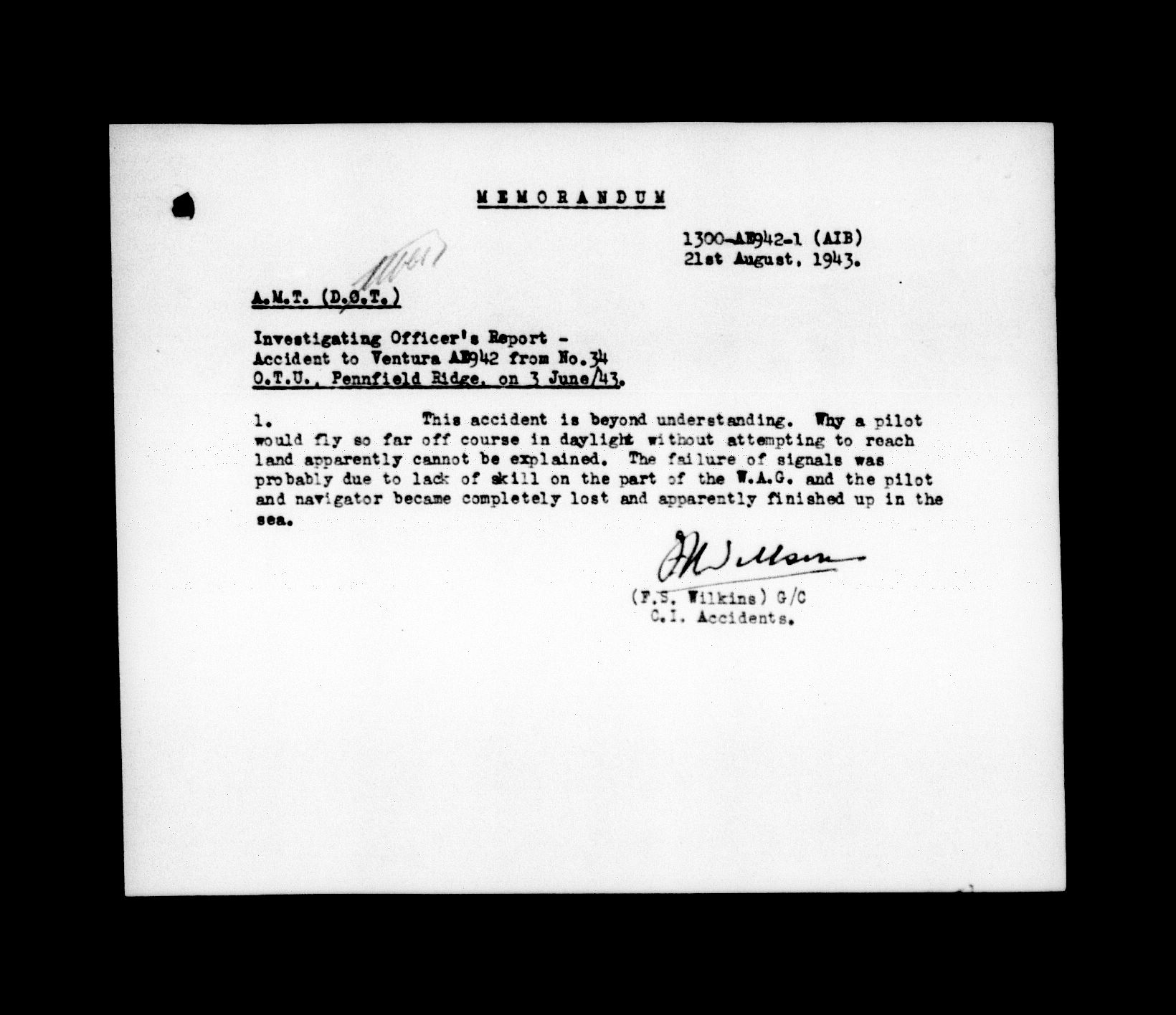

April 29, 1924 - June 3, 1943










Frederick John Stiles was the son of Albert George Stiles (1882-1949), worker at C.I.L., and Ethel Louise (nee Miller) Stiles (1886-1984) of Windsor, Ontario; Mrs. Stiles resided in Victoria, BC after 1950. Fred had one brother, George Stanley Stiles (1909-1982) posted with the RCAF, and two sisters, Doris Lucy Stiles (1913-1986) and Allison Ethel Pippy (1918-2016).
Fred left school at 16 years of age. He took vocational school (mechanical draftsman). He worked as a mail boy at Chrysler of Canada, Windsor. After the war, he hoped to return to his job. “Keen, courteous, quiet, very pleasant personality; wiry type, preference for WOAG, splendid material for aircrew.” On his medical RCAF form, he noted he had mild heat stroke for two summers, had been in an automobile accident and was knocked out for thirty minutes. [See article above, from June 1941.] He had Scarlet Fever at age 4, measles, mumps, and chicken pox as a child. He liked to build model aircraft building, participated in track and baseball. “Wiry. Mole left middle thigh. Port wine stain right costal margin.” He stood 5’11” tall and weighed 135 pounds in May 1942. He had blue eyes and brown eyes. “Alert, average intellect. Immature. Interested in wireless. Suitable for WOAG.” He was accepted into the RCAF May 18, 1942. He weighed 147 pounds by November 1942. “Low average intelligence. Fit. Has apparently recovered from post-concussion headache.” Fred gave $45 a month to his mother as partial support.
Fred started his journey through the BCATP at No. 1 Manning Depot, Toronto, May 18, 1942 until he was sent to No. 3 Wireless School, Winnipeg, Manitoba, August 1, 1942. He was then sent to No. 3 Bomb and Gunnery School, MacDonald until May 13, 1943. Then he was sent to No. 34 O.T.U., Pennfield Ridge, NB May 14, 1943.
Fred was at the station hospital four times: April 24 – 26 1942, August 18 – 24, 1942, December 14 -18, 1942 and March 1 – 7, 1943.
Crew of Ventura AE942: Sgt. Frederick John Stiles, (RCAF Air Gunner), Sgt. Roland Frank Brier, (RZAF WAG), Sgt. Francis Robert Carter (RNZAF Navigator), and PO Selwyn Noel Langdale, (RNZAF Pilot) were all killed when their aircraft crashed into the Bay of Fundy. From crash card: “Ventura AE942 took off 1640 hours GMT with Ventura AE658 to carry out local formation flying. Ventura AE658 landed at 1800 hours after breaking formation at a point between 30- and 40-miles SE of aerodrome. The a/c was last seen flying due sough and failed to return. Investigating officer might have checked to possibility of PO Langdale having reversed his compass course; also the possibility of infringements at fault. No further contact with base after notification ‘airborne and changing to formation R/T frequency’. R/T was functioning when a/c broke formation. No evidence of results of Unit’s attempt to contact a/c by W/T. Considered failure of signals was probably due to lack of skill of WAG and pilot and navigator became lost and apparently ended up in the sea.”
Ventura AE942 had been involved in an earlier accident at No. 34 O.T.U., Pennfield Ridge, NB on July 26, 1942. The crew were all uninjured when the aircraft tipped on nose when brakes applied while landing, according to the crash card.
Court of Inquiry: Microfiche C5935 Image 754. Thirteen witnesses were called. Twenty four aircraft from various stations took part in the search along with three surface craft.
SUMMARY: “PILOT: P/O Langdale’s instructor stated that he was a safe, steady pilot with no outstanding faults and his instrument flying was better than average. DESCRIPTION OF FLIGHT: P/O Langdale, pilot with Sgts Carter, Brier, and Stiles took off at 1640 hours in Ventura AE942 to carry out formation day training for one hour and 30 minutes. WO2 M. N. Harris, R83137, student pilot, took off in Ventura AE658 to fly in formation with P/O Langdale. He states as follows: ‘I took off first and he then followed me off. He pulled into formation about five minutes after take-off. We climbed up in formation on a heading of 045 until we reached the cloud base which was approximately 2500 feet. We flew under the cloud base for approximately 15 minutes. During this time, we did several turns, keeping within the local flying area to the NE of the aerodrome. The clouds were about 5/10s in that area and as it was very busy, I decided to climb above them. We levelled out at 6000 feet. I then led the formation down to the coast. As we approached the coast, the clouds below us thickened. I then made a turn to the right and followed the coast line back to the airport. Seeing a very large clear spot in th area bounded by the airport, Lake Utopia, Saint Andrews, I led the formation into it and then gave P/O Langdale lead of the formation. He then turned to the right and flew on a heading of approximately 045 degrees, passing north of the airport which was plainly visible to me and my navigator. We flew on for several minutes and he did a turn to his right ad flew on to approximately 135 degrees and continued on his course. The tops of the clouds were building up and we were flying through wispy light clouds. We finally broke through one of these clouds and a very dark cloud loomed up ahead of us. He immediately went into a climb without giving a signal, consequently, I dropped about two lengths behind him. On entering cloud, I lost sight of him, so I immediately turned away from him to the right, turning 180 degrees bringing me back out of this cloud. About a minute later, I saw him emerge from the cloud to the SE of me. He then turned towards me, I continued on my course. Our height at this time was approximately 6500 feet. We were still flying through light broken cloud and he passed under me, and then turned to his left and passed very close underneath me. I then began a turn to my left to renew the formation. At this time, his Wireless Operator called up and wanted to break the formation. I immediately turned to my right towards our airport on a course of about 330 degrees and descended down to 2000 feet below the cloud base and flew directly. Home. It took me approximately 15 minutes to reach the airport and land.” WO2 Harris further stated that he did not strike any icing condition on the flight. In answer to an opinion of what may have caused the disappearance of Ventura AE942, WO2 Harris stated, ‘I would say that is possible that he had reversed his compass.’ He also stated that Langdale’s formation flying appeared to be good to him. This was the only time he had flown in formation with Langdale. An extensive and intensive search was carried out for the missing aircraft and crew, but no trace was found.” The twelfth witness, P/O M. G. Findlater, NA416969, pupil pilot on No. 12 Course, No. 34 O.T.U., RAF Station Pennfield Ridge, NB stated that he had flown Ventura AE942 immediately prior to its last formation flight by P/O Langdale on June 3, 1943. ‘It was a perfectly good aeroplane to fly. I knew P/O Langdale very well personally, but I have not flown with him. I don’t know much about his flying ability, but he was of a very steady character and a very reliable and careful type. I have no idea of the cause of the disappearance of the aircraft, but it was in perfect flying condition when I last flew it.’ The thirteenth witness, F/O R. S. White, J15278, Flying Instructor, stated that Langdale was ‘a safe, steady pilot with no outstanding faults that I could see. His instrument flying was better than average. The cause of the disappearance of the aircraft is very obscure and I don’t believe I could give an opinion. As far as I know, there were no Flying Regulations broken at all.’ CAUSE: Very obscure. CONCLUSIONS: Evidence is lacking as to the inspection and condition of instruments prior to the flight. It is considered that the occupants of aircraft AE942 may reasonably be presumed dead.”
G/C F. S. Wilkins, CI Accidents, wrote on August 21, 1943: “This accident is beyond understanding. Why a pilot would fly so far off course in daylight without attempting to reach land apparently cannot be explained. The failure of signals was probably due to lack of skill on the part of the WAG and the pilot and navigator became lost and apparently finished up in the sea.”
In late October 1955, Mr. and Mrs. Stiles received a letter informing them that since Fred had no known grave, their son’s name would appear on the Ottawa Memorial, along with his crew members.
LINKS: